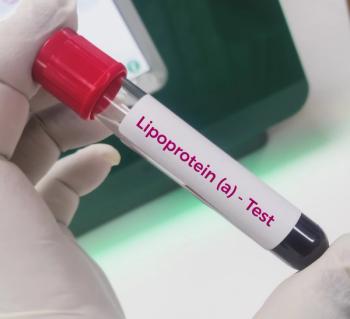
- Vol 28 No 9
- Volume 28
- Issue 9
This Drug Spending Trend May Surprise You
A new forecast reveals an important focus point for healthcare execs in the quest to manage pharma costs.
The cost of pharmaceuticals continues to account for a large share of every healthcare organization’s budget and this trend is unlikely to change, according to a new drug forecast.
Health systems can expect a 4.92% increase in the price of pharmaceuticals in 2019, according to Vizient’s Drug Price Forecast. This increase comes despite market and government efforts to rein in drug prices.
This estimate represents an anticipated slower rate of growth compared to previous Vizient forecasts, such as the 7.61% value projected for 2018.
“This growth still represents a substantial impact to member budgets,” says Steven Lucio, PharmD, PhD, associate vice president, pharmacy service for Vizient. “As a result, a continued dedication of energy and resources to ensuring optimal medication use and prescribing practices is still required by pharmacists and physicians.”
The more recent expansion of specialty pharmaceuticals is forcing healthcare institutions to change their investment approach to expand non-acute-care directed pharmacy services and view their costs and reimbursements in totally different ways, according to Lucio.
“Healthcare executives must also maintain a focus on changes in the way in which new medications are developed, marketed, and delivered,” he says. “Further, they must also be cognizant of competition-in the form of generic drugs and biosimilars-as soon as they become available. Finally, they must be aware of the regulatory- and advocacy-related issues that will affect practice in the future. The drug price forecast addresses all of these areas.”
Brand, specialty drug prices
The specialty pharmacy market is expected to continue its rapid pace of growth, which accounts for the majority of overall price inflation. According to a recent industry analysis, specialty pharmaceuticals now account for more than 46% of the total spend on drugs in the U.S., despite being used for very small and targeted patient populations.
“The prices of branded and specialty drugs continue to increase and this trend is expected to persist,” Lucio says. “Costs for previously approved medications, particularly those used in the oncology and immunology areas, continue to grow. More drugs are slated for approval in these clinical areas and each new drug tends to enter the market at a higher price. Many of the drugs that have consumed costs in these areas are biologic drugs that until recently-with the advent of biosimilars-were not subject to competition. While in existence, the biosimilar market is still in its formative stage and has not yet had a significant impact on pricing behaviors. The costs of therapies are expected to increase as even more personalized medications, including additional gene therapies, receive approval.”
Healthcare executives must understand when and where these developments are likely to take place and ensure they have pharmacist resources deployed to help physicians identify the therapies that will deliver the best outcomes, according to Lucio.
“Executives must also have sophisticated mechanisms to evaluate cost and reimbursement of treatment across all sites of care,” he says. “Healthcare executives must be engaged in advocacy activities to pursue legislative changes that will recognize appropriate reimbursement for the increasingly complicated services health systems are expected to provide.”
Lucio highlights some takeaways from the report:
- The growth rate for high-cost, non-contracted products, where no competition is available is approximately four times that of contracted products, where competition (generic, biosimilar, therapeutic alternative) exists.
- While the rate of anticipated price increase has slowed, the growth in drug costs continues. “Therefore, healthcare organizations must ensure continual evaluation of the ways in which medications are used across health systems and in all settings,” Lucio says. “Increasingly, organizations must assess not just the cost and associated reimbursement of treatment, but what outcome the therapy provides.”
- The areas of greatest expense include oncology, rheumatoid arthritis, gastroenterology conditions, multiple sclerosis, and other specialized disease states. “Health systems must demonstrate increased proficiency at providing high-quality care in these patient populations,” Lucio says.
- Many opportunities for advancement of healthcare quality will require legislative action. “Therefore, pharmacy must be viewed as a strategic topic for healthcare organizations,” Lucio says. “In addition, pharmacy must be the continued subject of advocacy activities to improve many elements of practice, such as a more appropriate reimbursement framework for the complex care that organizations must deliver.”
Articles in this issue
over 7 years ago
How Tweaking Therapies Can Help Mental Health Treatmentover 7 years ago
Six Skills You Need to Haveover 7 years ago
Three Ways Health Organizations Can Improve Data Useover 7 years ago
New Drug Pricing Tools Could Save Moneyover 7 years ago
Five Healthcare Leadership Needs Fueled by Value-Based Careover 7 years ago
Mental Healthcare Program Meets Unique Needs of Militaryover 7 years ago
New Drug Pricing Act Could Change Drug Pricingover 7 years ago
Hospital CEO Keeps Pediatric Care LocalNewsletter
Get the latest industry news, event updates, and more from Managed healthcare Executive.






















































